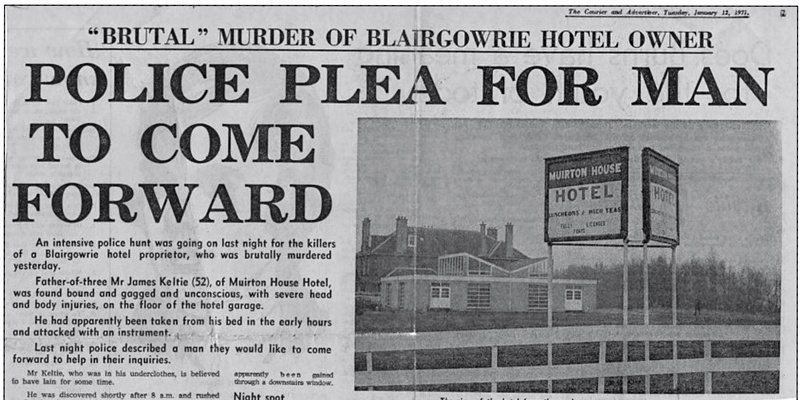Police are to review the brutal murder of a Blairgowrie man 40 years after his death.
Detectives are once again looking into the murder of 52-year-old James Keltie, who was found partially clothed and heavily beaten at Muirton House Hotel on the morning of January 11 1971.
Discovered by a taxi driver who had arrived to take Mr Keltie’s children to school, the hotelier had been bound and gagged, having sustained severe head injuries, believed to have been caused by a blow from a crowbar.
Despite being rushed to Dundee Royal Infirmary, he died in transit as a result of bleeding to the brain.
His killer has never been found.
However, in a bid to finally solve the mystery of Mr Keltie’s murder, Tayside Police are reviewing the case four decades on.
Detective Chief Inspector Graham McMillan, who is leading the review, said: ”This is a review as part of an ongoing process of reviewing unresolved serious crimes. The review will consist of looking at our existing records, consideration of advancements in forensic techniques and, if necessary, clarifying certain points with officers who were involved with the case.”
Mr Keltie’s death prompted the largest murder inquiry ever held in Perthshire.
Every male in Blairgowrie over the age of 16 was required to give their fingerprints to Perth CID, a measure that was then extended to Alyth, Coupar Angus and Birkhill in a bid to trace the culprit.
A function had taken place in the hotel, now a nursing home, the night before the murder, although no guests had decided to stay.
The investigation had focused on robbery as the motive and an appeal was put out for a man aged between 26 and 28 and wearing a khaki jacket seen walking near the hotel at 4.40am on the day of the attack.
The man never came forward and a further request to find the driver of a cream car also provided police with no joy.
Retired police sergeant Willie MacFarlane revived interest in the unsolved murder through a chapter in his book, The History of the Perthshire and Kinross-shire Constabularies.
Now a curator at the Tayside Police Museum in Dundee, he believes the killer can still be traced.
Speaking as his book was published (link), he said: ”The killer, or killers, could still be alive. Someone out there knows what happened to Mr Keltie.”
